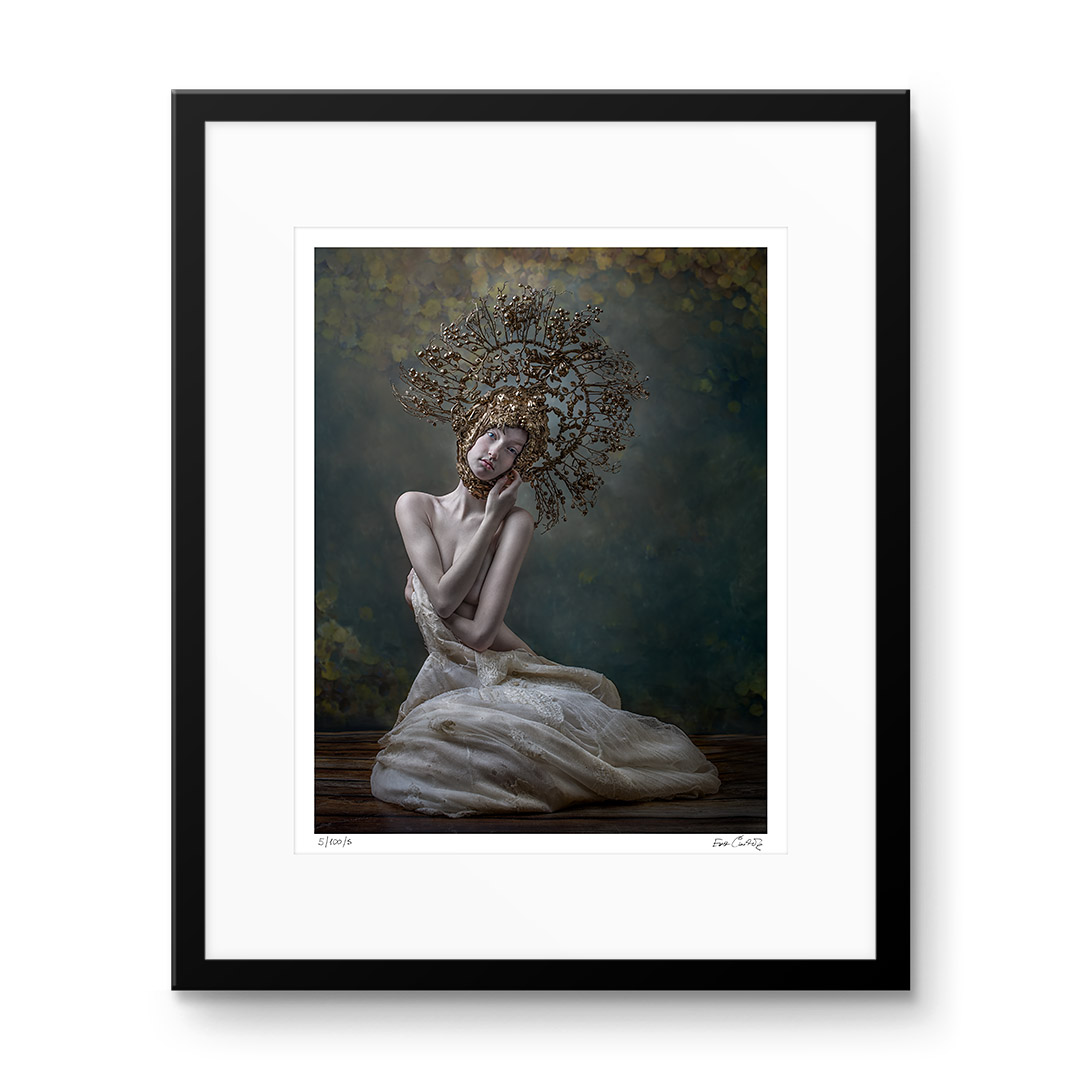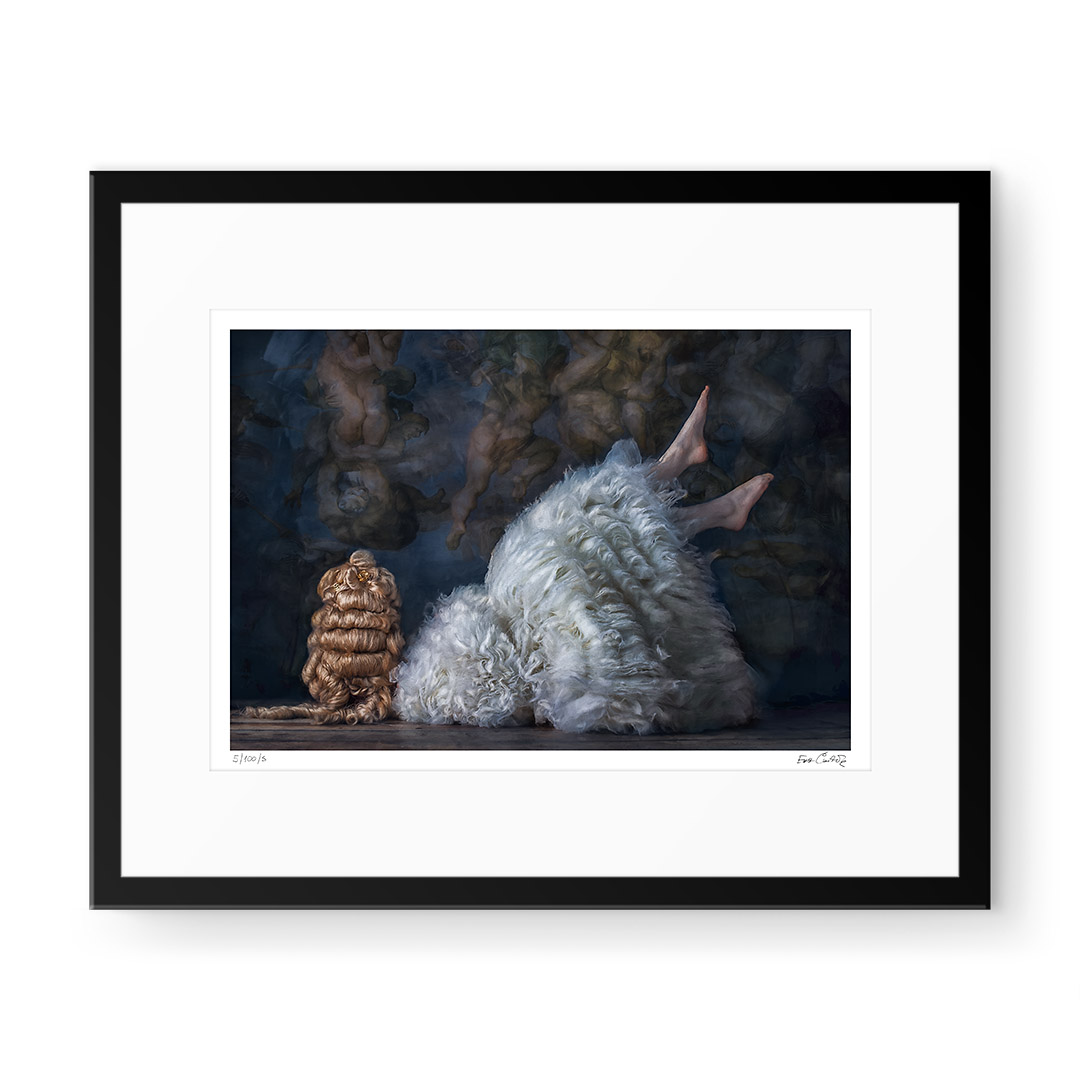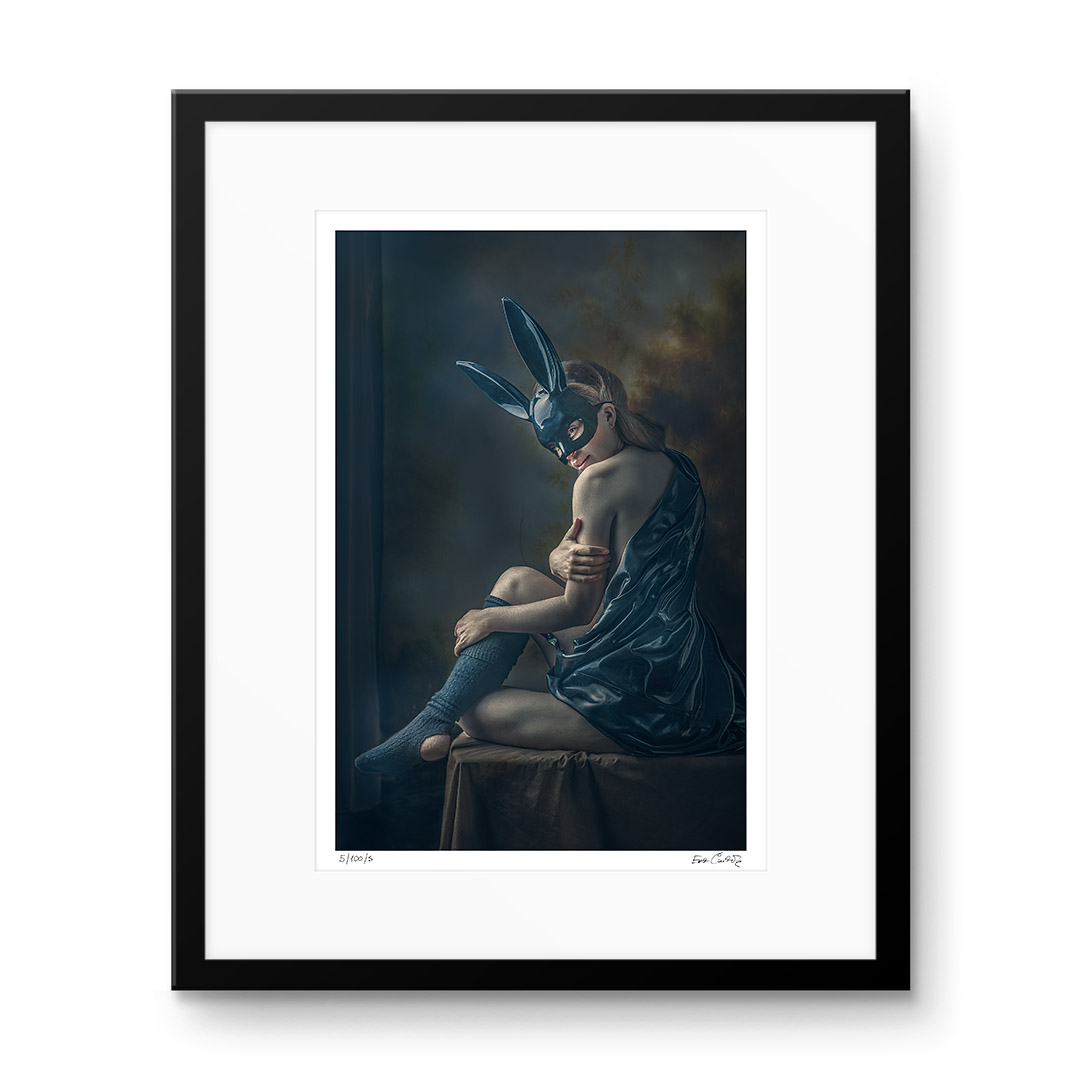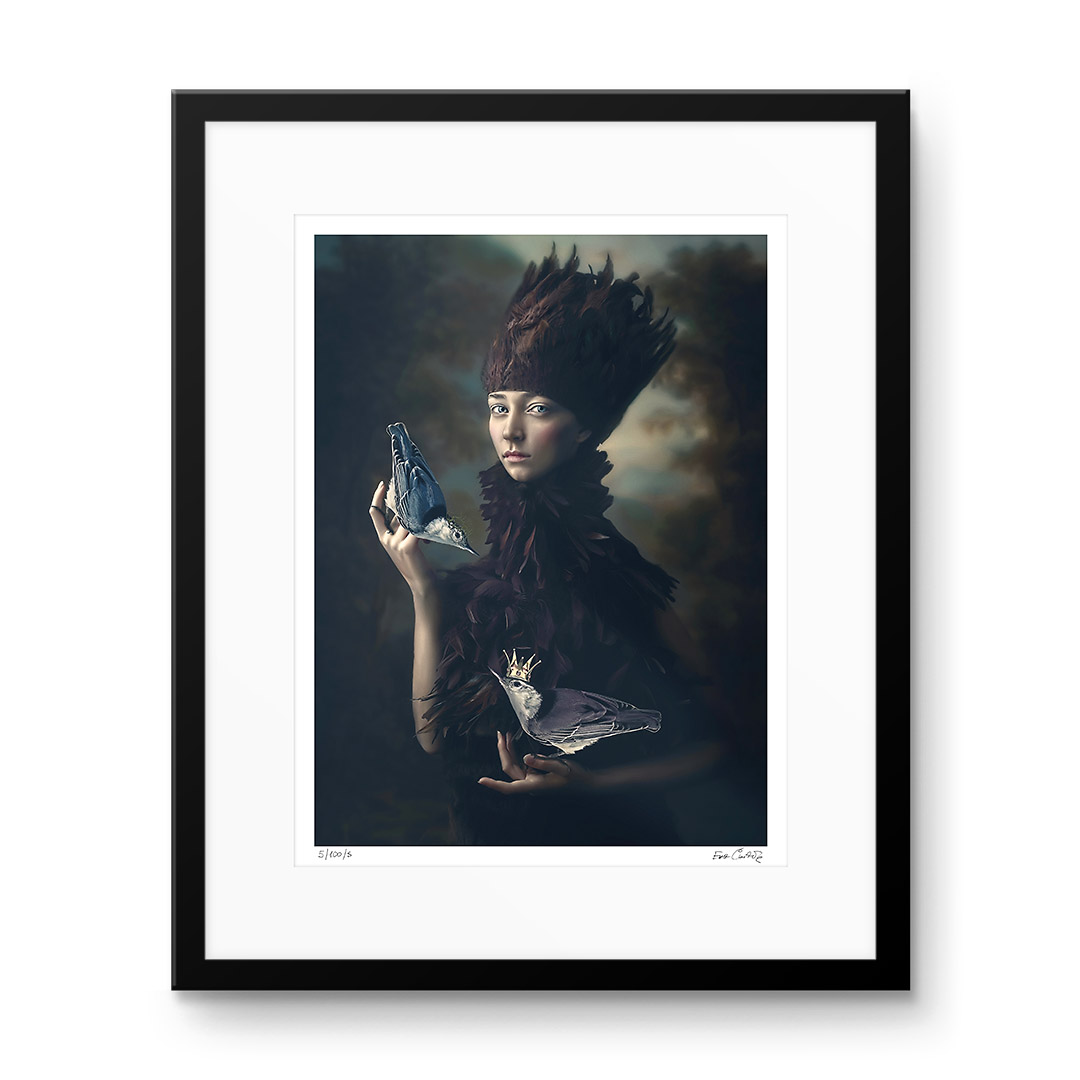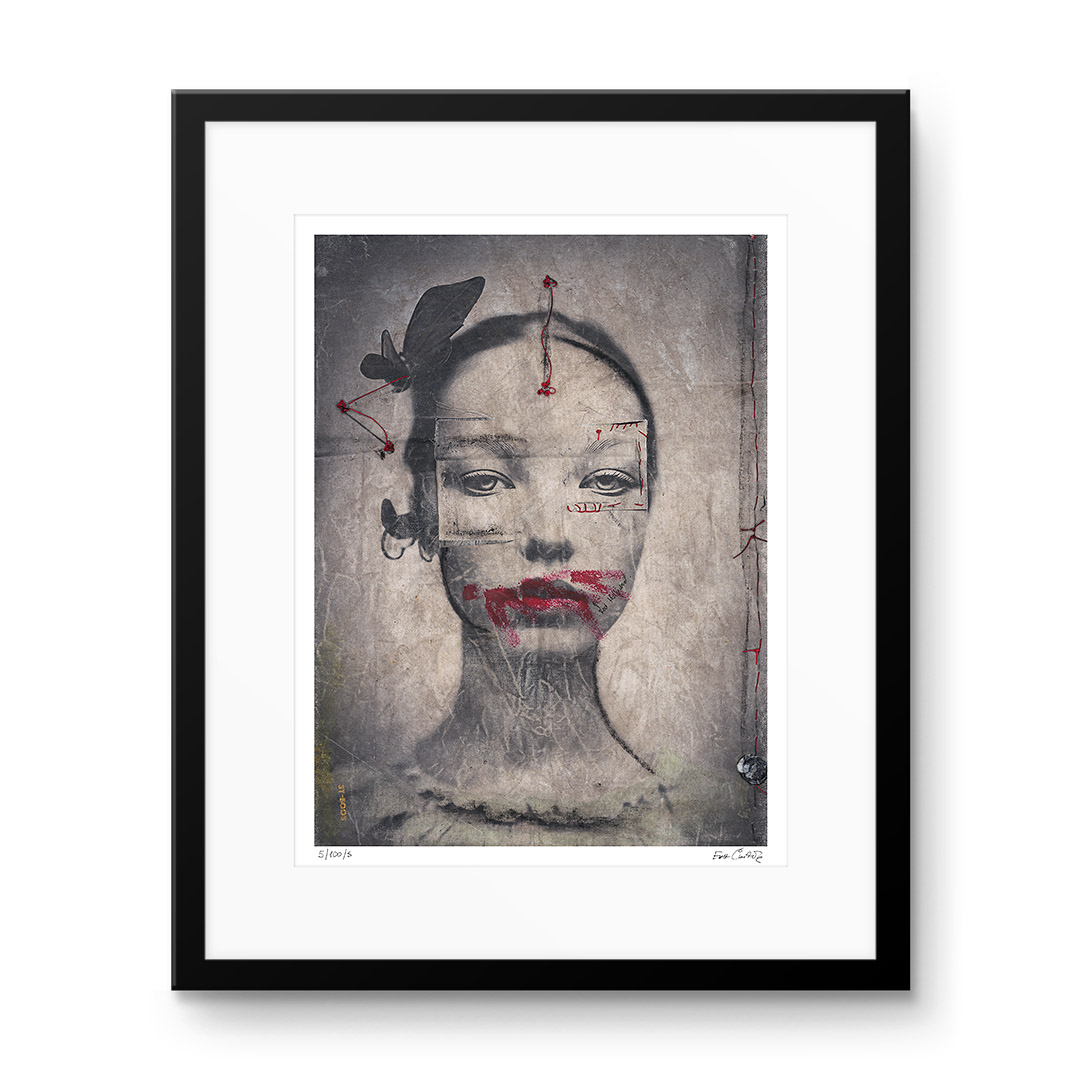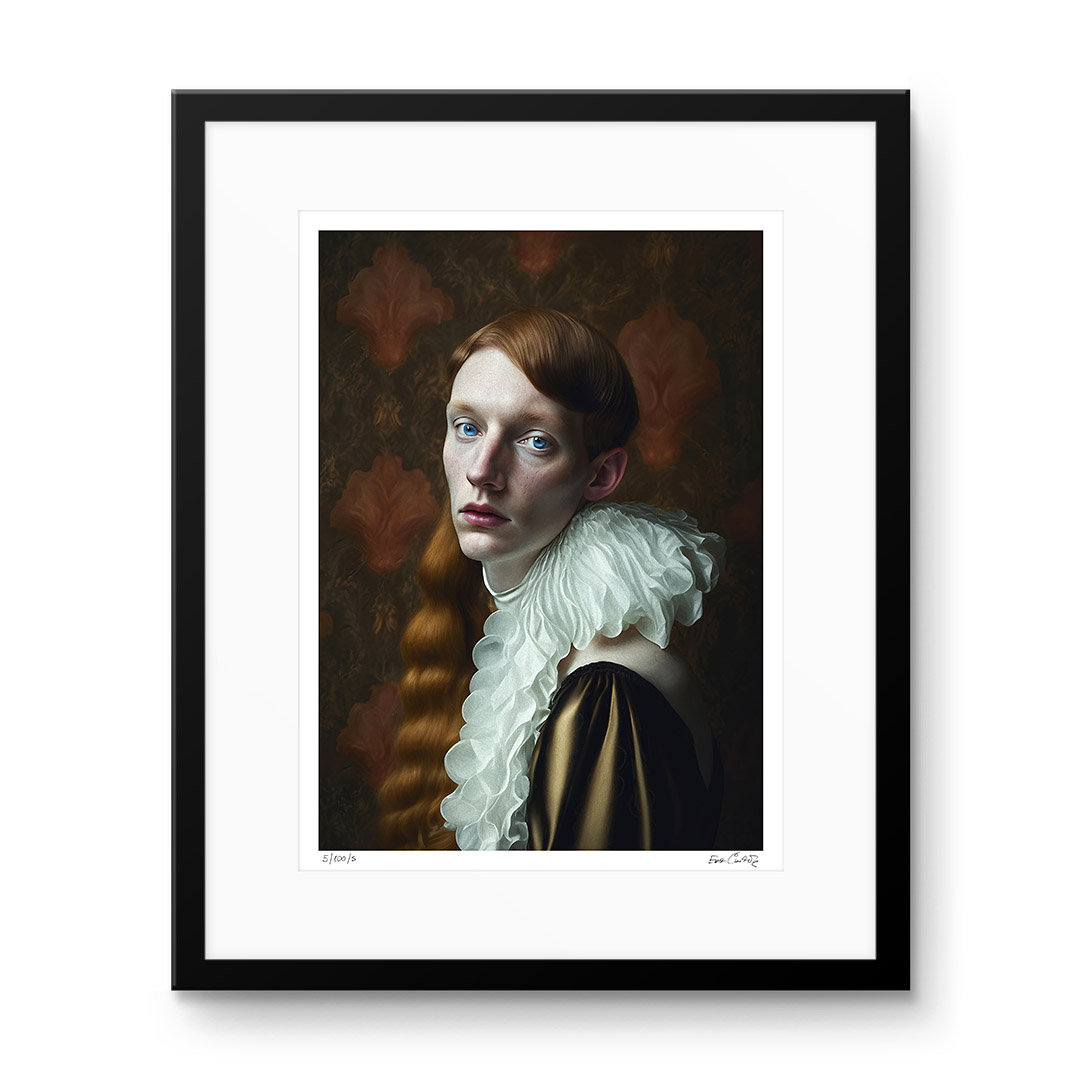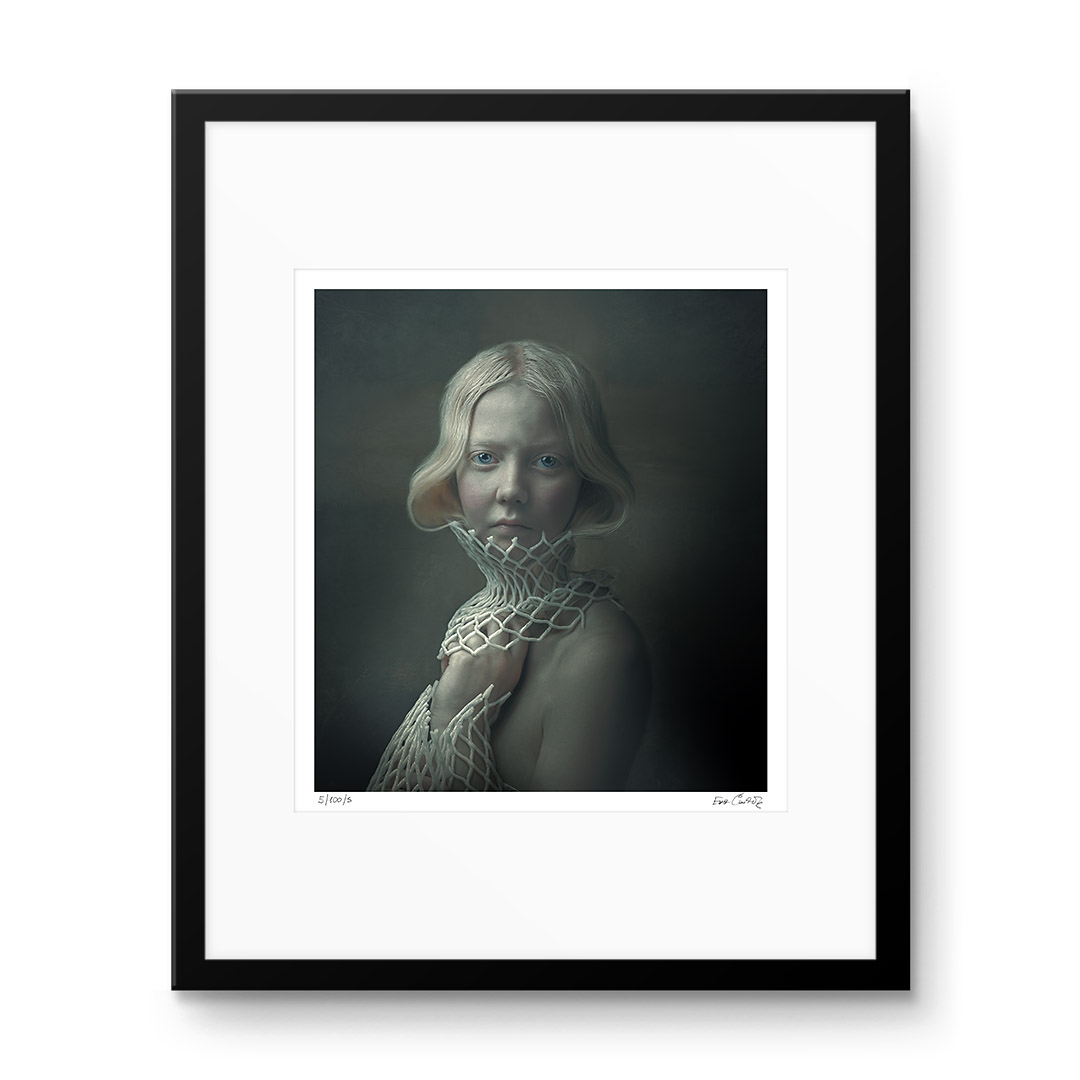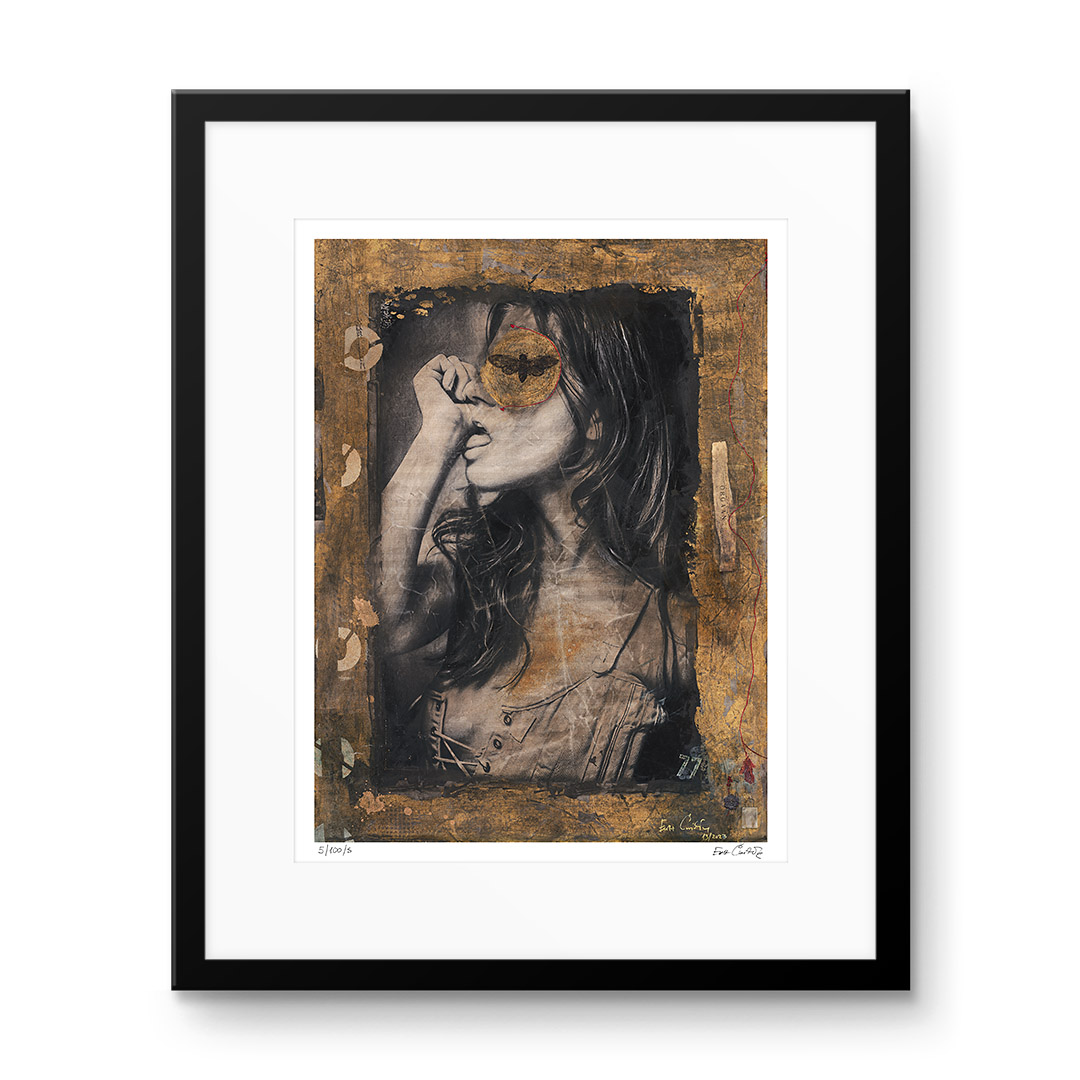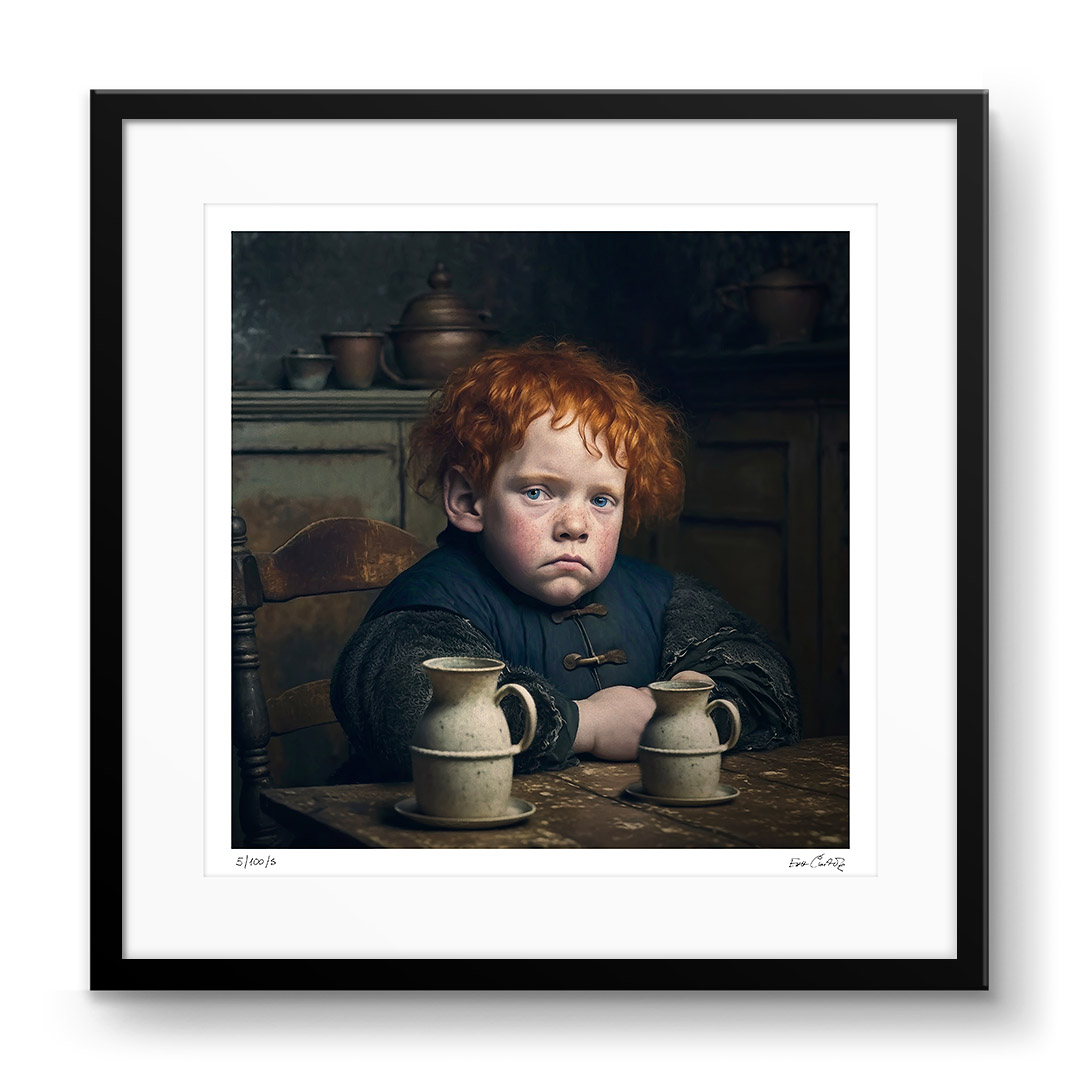COLLECTOR’S PRINTS – ARTISTIC PHOTOGRAPHY
EWA CWIKLA
Can photography rival the paintings of the Old Masters? Ewa Cwikla proves that it can. Her extraordinary portraits, inspired by the light of Dutch masters, transport the viewer into another reality — one filled with emotion, nostalgia, and a delicate play of light and shadow. The artist doesn’t just capture beauty — she reveals authenticity and sensitivity in her subjects.
Discover the collectible photographs by Ewa Cwikla.
PRINTS | ABOUT THE ARTIST | BIO | EXHIBITION | IN THE MEDIA | INTERVIEW

ARTIST INFORMATION
Ewa Cwikla is a photographer whose work blends painterly aesthetics, emotional depth, and a clear dialogue with Flemish and Dutch Golden Age art. Her portraits stand out through their characteristic light inspired by the old masters, a subtle play of shadows, and a nostalgic atmosphere. Through her art, she not only documents but above all reveals authenticity and hidden emotions in her subjects.
Cwikla focuses on portraiture, which she treats as a form of visual storytelling about the human experience. Her frames are intimate, full of sensitivity and a unique atmosphere, yet timeless in style. Working with models—often women she meets by chance in everyday life—she creates images free from pathos and artificiality. Constantly seeking new forms of expression, the photographer experiments with both classical techniques and her own post-production methods, giving her photographs a distinctive and unmistakable character.
Her works have been awarded multiple times in international photography competitions. Ewa Cwikla’s unique style and masterful approach to light make her art appreciated by both photography enthusiasts and art collectors alike.
BIO
Ewa Cwikla was born in Poland but has been living and creating in the Netherlands since 1986. Her first experiences with photography date back to her youth, when she experimented with an old Zenit camera in her school’s photography club. A fascination with imagery and light has accompanied her throughout her life, and her passion for portraiture gradually evolved into a full-fledged artistic career.
In the 1980s, she began working at a photography studio in Schagen, where she gained valuable experience. In 1985, she made a bold decision to take over the studio and run her own business. Over the years, she has developed her technique by blending a classical approach to photography with modern editing tools.
Since 2015, she has fully dedicated herself to fine art photography, focusing on portraiture and personal projects. Her work—deeply inspired by the mood of the old masters and everyday emotions—has gained recognition on the international photography scene. She has received prestigious awards, including the Fine Art Photography Awards and the International Color Awards, confirming the uniqueness of her artistic vision.
Ewa Cwikla currently lives and works in Purmerend, the Netherlands, where she runs her own photography studio, develops personal projects, and conducts workshops for photography enthusiasts. Her works have been featured in numerous exhibitions, and her distinctive style continues to attract collectors from around the world.
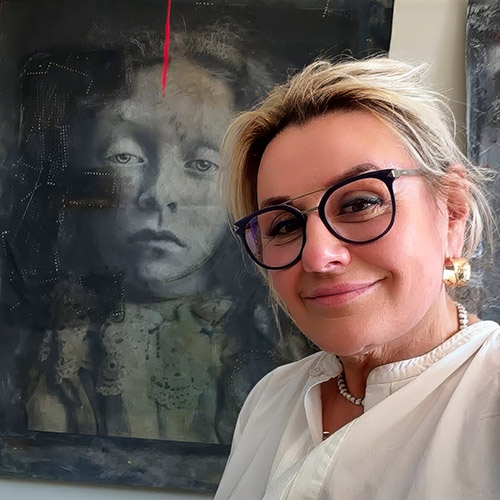
EXHIBITIONS:
- 2025 – Art Capital – group exhibition – France
- 2024 – Bator Art Gallery – Sopot – Poland
- 2024 – EMI Art Gallery – Warszawa – Poland
- 2024 – Kunsthuis Westerland – group exhibition – Netherlands
- 2023 – Consulate General of the Republic of Poland – Netherlands
- 2023 – Art Capital – Paris – group exhibition – France
- 2023 – Bator Art Gallery – Szczyrk – Poland
- 2023 – Mick Art Collection Gallery – Emmen – group exhibition – Netherlands
- 2022 – Vinci Art Gallery – Poznań – Poland
- 2021 – BBA Gallery – Berlin – group exhibition – Germany
- 2021 – Centrum Praskie Koneser – group exhibition – Poland
- 2021 – Bator Art Gallery – Szczyrk – group exhibition – Poland
- 2021 – Wilma Geerts Gallery – Dordrecht – Netherlands
- 2019 – Gallery Bakenes – Haarlem – Netherlands
- 2019 – Fundazione Luciana Matalon Gallery – Milan – group exhibition – Italy
- 2019 – Bator Art Gallery – Szczyrk – Poland
- 2019 – Ton Gallery – Rucphen – Netherlands
- 2019 – Gallery Joseph Turenne – Paris – group exhibition – France
- 2019 – Zofia Weiss Gallery – Krakow – Poland
- 2019 – Gallery Ewa Helena – Hamburg – Germany
- 2018 – Siena Awards Festival – group exhibition – Italy
- 2017 – Somerset House – London – group exhibition – United Kingdom
AWARDS AND DISTINCTIONS:
Ewa Cwikla is the recipient of numerous prestigious awards. Her works are held in private collections in Poland and around the world. She has been recognized with distinctions such as:
- 2020/21 – 13 th International Color Awards – Silver
- 2020 – 6th Fine Art Photography Awards – GRAND WINNER – PHOTOGRAPHER OF THE YEAR 2020
- 2018 – 12th International Color Awards Gold – Portrait
- 2018 – ND Awards – Gold – Portrait
- 2018 – Tokyo Photo Awards – Silver – Reclame
- 2018 – Fine Art Award Photography – Silver – Portret
- 2017 – Winnaar van de Sony Award – Nederlands portret
- 2017 – Monovisions Photography Awards – Black & White Fine Art Photo of the Year
- 2017 – Award Winner – Gold – Contemporary Photography – ND
- 2017 -Fine Art Photography Awards – Silver – Child Portrait
- 2017 – Monochrome Photo Award Bronze – Portrait
- 2016 – Monochrome Photo Award Bronze – Portrait
INSPIRING STORIES:
- Art photography – a new wave in art collecting?
More and more people are starting their art collections with photography. Discover why this medium is experiencing a revival today.
ARTIST IN THE MEDIA:
ARTINFO.PL
Ewa Cwikla – Rembrandt’s Light and Other Stories
Find out more
The “Gaugany” series at Emi Art Gallery
Find out more
ARTYSTA I SZTUKA
Interview with the artist in issue #31 of Artysta i Sztuka
Find out more
RYNEK I SZTUKA
Exhibition: Rembrandt’s Light and Other Stories
Find out more
RADIO KRAKÓW
Rembrandt’s Light – Photography Exhibition by Ewa Cwikla
Find out more
SZEROKI KADR
Ewa Cwikla – a photographer for whom light and emotion are the key to telling human stories.
Find out more
PHOTO VOGUE
Ewa Cwikla’s work on the international stage
Find out more
WELCOMETO.PL
Rembrandt’s light
Find out more
1X.com
Photographer of the week
Find out more
JRPHOTO
Portraits, light and emotions – an interview with Ewa Cwikla
Find out more
USEFUL LINKS:
INTERVIEW WITH EWA CWIKLA
Ewa Cwikla is an artist who doesn’t just photograph people – she uncovers them. Her photographs are like paintings – filled with light, shadow, and mystery. While inspired by old masters, they tell deeply contemporary stories. In our conversation, she shares what moves her, how she works with light, and why sometimes a single glance from her model can change everything.
Photography is, on one hand, capturing a moment – and on the other, interpreting it. What kinds of emotions or stories feel the most personal to you when working on a portrait?
I want to show beauty and authenticity – not just physical, but emotional as well. I’m drawn to moments of focus, contemplation, inner strength, and sometimes nostalgia or that hint of darkness that lingers a bit longer. My photos often carry a sense of mystery and depth. I believe that in subtle gestures and glances lies an entire story about a person.
Your photos have a very painterly quality – the light, the composition, the atmosphere. How do you achieve that effect?
Light is my main tool. I draw inspiration from classical painting – from the way Rembrandt or Vermeer used chiaroscuro. That’s where I learn how to create intimacy and depth. I often work with natural light or very soft studio lighting to achieve subtle tonal transitions. Post-production plays a big role for me – but not for “beautifying.” It’s more about enhancing the atmosphere. Gently emphasizing colors, skin texture – so the photo resembles a painting.
You mostly photograph people. What is essential to you in that relationship with the person on the other side of the lens?
The most important thing is trust and authenticity. I’m not interested in forced poses or professional models. I want the person in front of the lens to feel at ease—to show themselves in a way they might have never seen before. For me, the most beautiful moment is when someone sees something in my photograph they hadn’t noticed in themselves until then.
Does it ever happen that someone surprises you during a shoot? Do you recall a situation when the session took an unexpected turn, but the result turned out to be exceptional?
Yes, and quite often! I remember a session with a young girl who was very shy at first, almost withdrawn. At one point, I suggested she simply close her eyes and listen to herself. When she opened them, something had shifted — her gaze was different, as if she had suddenly found a new strength within. It was a magical moment, something you can’t plan. What’s more, she’s now my favorite model — we still work together to this day.
How does your creative process look? Do you have any rituals that help you get into the “artistic mode”?
Silence and calm are essential for me. Before a session, I often listen to music that reflects the mood I want to create. I also like to take a moment to talk with the model to understand them better. That way, during the shoot, I don’t feel like I’m just capturing an image – I’m creating a story.
Photography is not only about emotion, but also about craft. What tools and techniques are essential to your work?
Besides light, color and texture are very important to me. I use full-frame cameras and fast lenses, but I’m not attached to any specific gear – it’s just a tool. What really matters is how I see the light and how I guide the model to achieve the intended effect.
It’s often said that light is the heart of photography. How do you work with it, and what role does it play in your images?
Light paints the story. When used properly, it gives the photograph a sense of three-dimensionality, allowing the subject to gain depth. I love side lighting – it sculpts the face and adds drama – but I also appreciate soft, gentle light that subtly highlights features and creates a calm atmosphere.
Do you have favorite compositions or frames that you return to often? Or do you try to find something new every time?
I often instinctively place the model in classical, Renaissance-like arrangements – I enjoy symmetry and harmony. But more and more, I reach for less obvious, more dynamic compositions. I like to try new approaches, even if they feel a bit risky.
Are there any artists – not just photographers – who particularly inspire you?
Absolutely. I’m inspired by Baroque painters like Rembrandt, but also by contemporary female photographers who create emotional, painterly portraits. I also have a deep appreciation for the work of Paul Huf and Marlena Bielińska – their sensitivity resonates strongly with me.
Is there something you’ve always wanted to capture in your photographs, but haven’t yet had the opportunity to do so?
For some time now, I’ve been thinking about creating multi-generational portraits—images that show family relationships and the history written on people’s faces. There’s something deeply genuine and moving in that, and I’d love to explore it further.
How has your photography evolved over the years? When you look at your early work today – what do you see?
It has definitely changed. My early photos were more documentary; today they are more painterly, focused on emotions. There is more light, atmosphere, and intimacy in them.
How do you go about selecting photos after a shoot? Is it easy for you to choose that one, most important image?
It’s always a difficult moment! I often leave the photos for a few days so I can look at them with fresh eyes. Sometimes, the one that didn’t convince me at first ends up becoming my favorite.
Can artistic photography go hand in hand with commercial work? How do you maintain a balance between art and everyday work?
Yes, but it requires awareness. For me, it’s important not to abandon my own style, even in commercial projects. I look for clients who resonate with my aesthetic and give me the space to create.
How have the realities of working as a photographer changed in the era of social media?
Social media have changed the rules of the game – but I don’t think that’s a bad thing. They give us the opportunity to reach people all over the world. You just have to be careful not to lose yourself in the chase for algorithms and likes.
Many people say that a good photograph is one that can capture the soul. In your opinion, what makes an image truly moving?
Authenticity and light. When the person in front of the lens feels like themselves, and the light enhances their natural presence, the photograph gains emotional power.
Is there a photograph in your body of work that has been particularly important or groundbreaking for you?
Yes, a few portraits of women — including the girl with pillows on her head and the portrait of an elderly woman that won me my first award — were moments that gave me the courage to move forward.
What was the most challenging photo shoot you’ve ever done?
Definitely the one in an old, dark castle – the conditions were tough, the light was minimal, but the final result made it all worthwhile.
Your series “Gaugany” combines photography, painting, and experiments with form – with canvases intentionally damaged, torn, rubbed, stitched. Where does the need for such freedom come from? Is it a way to explore new emotions?
Absolutely. In my Gaugany, I can express myself across various art forms. It’s a space full of freedom and endless possibilities – I can experiment with techniques, styles, and form. I create unique works composed of my own photographs, frames that I combine into a new whole, telling a personal story. I try to convey the emotions and feelings I experienced while working on each of them. In the Gaugany – intentionally spelled with a “u” – you’ll find both abstract compositions and more realistic portraits drawn from my photographic work. Each Gaugan is one of a kind, reflecting my experiences and – I hope – leaving a lasting impression. What’s more, each one also features its own original method of hanging and presentation.
Finally – what would you say to people who want to start their journey with photography?
Look. Observe the light. Experiment. And don’t copy – find your own language. It’s a long road, but a beautiful one. And the most important thing? Don’t get cocky too soon, but also don’t let anyone put you in a box.

